Study on the mechanism of herbal pair of Banxia-Huanglian in treatment of gastroesophageal reflux disease based on molecular docking and network pharmacology
-
摘要:目的 应用网络药理学分析方法及分子对接技术研究半夏-黄连药对治疗胃食管反流病(GERD)的作用机制。方法 应用中药系统药理学数据库与分析平台(TCMSP)和Genecard数据库分别筛选出半夏、黄连的有效成分和GERD的相关靶点;采用Cytoscape软件绘制药物-疾病靶点的调控网络图;采用STRING数据库构建蛋白互作(PPI)网络;采用AutoDock软件进行分子对接预测药物与疾病靶点的结合性,通过Pymol软件实现对接结果可视化,构建相互对接模式图;运用R软件对有效靶点进行GO基因功能分析及KEGG通路分析。结果 半夏-黄连有效成分共27个,GERD相关靶点2 960个,半夏黄连-GERD取交集后得到106个靶点。分子对接结果显示,苏氨酸蛋白激酶1(AKT1)、半胱天冬酶3(CASP3)、血管内皮生长因子A(VEGFA)、人原癌基因(JUN)、白细胞介素-6(IL-6)与槲皮素、黄芩苷、β-谷甾醇具有较好结合活性,基因功能分析共969条,信号通路121条。结论 半夏-黄连具有多成分、多靶点及多通路的特性,主要通过抑制炎症反应、降低氧化作用、促进肿瘤细胞凋亡等过程发挥治疗GERD的作用。Abstract:Objective To study the mechanism of the herbal pair of Banxia-Huanglian in gastroesophageal reflux disease (GERD) by network pharmacology and molecular docking.Methods Traditional Chinese Medicine Systems Pharmacology Database and Analysis Platform (TCMSP) and GeneCard database were used to screen the active components of Banxia-Huanglian and relevant targets of GERD, respectively. Cytoscape software was used to plot the regulatory network of drug pair and disease target. STRING database was used to construct Protein-Protein Interaction (PPI) network for protein interaction. AutoDock software was used for molecular docking to predict the combination between drugs and disease targets. Then, Pymol software was used to realize the visualization of docking results and build a mutual docking pattern diagram. The GO gene function and KEGG pathway of the effective target were analyzed by R software.Results There were 27 active components of Banxia-Huanglian and 2 960 targets related to GERD. A total of 106 targets were obtained after the intersection of Banxia-Huanglian-GERD. Molecular docking results showed that threonine protein kinase 1(AKT1), caspases 3(CASP3), vascular endothelial growth factor A(VEGFA), human oncogene (JUN), interleukin-6 (IL-6) had good binding activity with quercetin, baicalin and β-sitosterol, and a total of 969 gene function analyses were performed, and 121 signal pathway were obtained.Conclusion Banxia and Huanglian play roles in the treatment of GERD by inhibiting inflammatory response, reducing oxidation and promoting tumor cell apoptosis based on their multi-component, multi-target and multi-pathway characteristics.
-
Keywords:
- Banxia /
- Huanglian /
- herbal pair /
- gastroesophageal reflux disease /
- molecular docking /
- network pharmacology
-
近年来,随着心脏外科手术及体外循环等技术的迅速发展及日趋完善,心脏外科手术的疗效也逐渐提高,但术后中枢神经系统并发症仍是影响患者康复效果和生活质量的主要因素之一[1]。脑梗死是心脏外科术后常见的中枢神经系统并发症之一,是指患者脑局部供血障碍导致脑组织坏死,进而产生一系列的神经功能缺损症状。目前,大量研究[2-3]针对这一并发症提出新的策略,但仍无统一的治疗或预防方案,导致患者发病率和致死率较高。本研究收集心脏外科手术后并发脑梗死患者的临床资料,分析其相关的影响因素,现报告如下。
1. 资料与方法
1.1 一般资料
收集2017年8月—2019年12月在本院行心脏外科手术的364例患者的临床资料,其中男252例,女112例; >65岁92例, ≤65岁272例; 吸烟138例,饮酒120例; 小学及以下文化程度111例,初/高中178例,高中以上75例; 高血压176例,糖尿病119例,高脂血症116例; 术后低血压39例,并发房颤53例。纳入标准: ①患者均行心脏外科手术,且无手术禁忌证; ②患者临床资料完整。排除标准: ①既往有心脏外科手术史者; ②合并心、肝、肾等重要脏器功能不全者; ③合并精神疾病、无法正常沟通者。364例患者中,术后并发脑梗死者32例,均经头部CT或磁共振成像(MRI)证实,符合相关诊断标准[4]。将32例患者依据手术方法分为体外循环组(包括冠状动脉旁路移植术、心脏瓣膜置换术等)12例与非体外循环组20例。
1.2 方法
收集364例心脏外科手术患者的相关资料,包括性别、年龄、吸烟情况、饮酒情况、文化程度以及高血压、糖尿病、高脂血症、低血压、术后房颤等资料,并采用单因素与多因素Logistic回归分析。
1.3 观察指标
依据头部CT或MRI结果,比较体外循环组与非体外循环组患者并发脑梗死的临床特点,确定脑缺血类型[5], 将脑梗死分为穿支动脉供血区梗死、皮层分支动脉供血区梗死、分水岭梗死、大面积梗死及多发性梗死。
1.4 统计学方法
采用SPSS 22.0统计软件包处理数据。计量资料以均数(x±s)标准差表示,采用t检验,计数资料采用χ2检验,采用Logistic回归分析法分析术后并发脑梗死的危险因素。P < 0.05为差异有统计学意义。
2. 结果
2.1 心脏外科手术后并发脑梗死的临床特征
心脏外科手术后并发脑梗死的发生率为8.79%(32/364)。体外循环组大面积梗死、双侧梗死及皮层梗死发生率依次为58.33%、41.67%、8.33%, 非体外循环组依次为15.00%、5.00%、45.00%, 差异有统计学意义(P < 0.05)。2组患者性别、年龄、体质量指数(BMI)、穿支梗死、分水岭梗死、多发梗死及陈旧梗死发生率比较,差异无统计学意义(P>0.05), 见表 1。
表 1 体外循环组与非体外循环组临床特征比较(x±s)[n(%)]临床特征 体外循环组(n=12) 非体外循环组(n=20) 性别 男 8(66.67) 14(70.00) 女 4(33.33) 6(30.00) 年龄/岁 64.35±4.65 64.02±4.97 BMI/(kg/m2) 23.58±1.90 23.40±1.79 穿支梗死 0 1(5.00) 皮层梗死 1(8.33) 9(45.00)* 分水岭梗死 5(41.67) 10(50.00) 大面积梗死 7(58.33) 3(15.00)* 双侧梗死 5(41.67) 1(5.00)* 多发梗死 5(41.67) 11(55.00) 陈旧梗死 3(25.00) 9(45.00) BMI: 体质量指数。与体外循环组比较, *P < 0.05。 2.2 单因素分析
单因素分析结果显示,脑梗死组与非脑梗死组患者在性别、BMI、吸烟、饮酒、文化程度及高脂血症等方面比较,差异无统计学意义(P>0.05), 而2组年龄、高血压、糖尿病、术后低血压以及房颤比较,差异有统计学意义(P < 0.05), 见表 2。
表 2 心脏外科手术后并发脑梗死的单因素分析(x±s)[n(%)]变量 脑梗死组(n=32) 非脑梗死组(n=332) t/χ2 P 性别 男 22(68.75) 230(69.28) 0.004 0.951 女 10(31.25) 102(30.72) 年龄 >65岁 23(71.87) 69(20.78) 40.340 < 0.001 ≤65岁 9(28.13) 263(79.22) BMI/(kg/m2) 23.30±1.85 23.00±1.80 0.838 0.402 吸烟 是 13(40.62) 125(37.65) 0.110 0.740 否 19(59.38) 207(62.35) 饮酒 是 14(43.75) 106(31.93) 1.846 0.174 否 18(56.25) 226(68.07) 文化程度 小学及以下 10(31.25) 101(30.42) 0.074 0.964 初中至高中 16(50.00) 162(48.79) 高中以上 6(18.75) 69(20.79) 高血压 有 8(25.00) 168(50.60) 7.661 0.006 无 24(75.00) 164(49.40) 糖尿病 有 21(65.62) 98(29.52) 17.292 < 0.001 无 11(34.38) 234(70.48) 高血脂症 有 13(40.62) 103(31.02) 1.239 0.266 无 19(59.38) 229(68.98) 术后低血压 有 13(40.62) 26(7.83) 32.811 < 0.001 无 19(59.38) 306(92.17) 房颤 有 17(53.12) 36(10.84) 41.943 < 0.001 无 15(46.88) 296(89.16) BMI: 体质量指数。 2.3 多因素Logistic回归分析
以并发脑梗死为因变量,将单因素分析中有统计学意义的年龄、高血压、糖尿病、术后低血压以及房颤设为自变量,进行多因素Logistic回归分析,结果显示年龄、高血压、糖尿病、术后低血压以及房颤是心脏外科手术后并发脑梗死的独立危险因素(OR=2.932、2.328、2.069、1.243、1.990, P < 0.05), 见表 3。
表 3 心脏外科手术后并发脑梗死的多因素Logistic回归分析因素 β SE χ2 P OR 95%CI 年龄 0.658 0.251 5.936 < 0.050 2.932 1.185~7.153 高血压 0.573 0.216 5.358 < 0.050 2.328 1.206~6.449 糖尿病 0.723 0.183 4.589 < 0.050 2.069 1.442~3.955 术后低血压 0.805 0.205 3.958 < 0.050 1.243 1.028~3.914 房颤 0.689 0.174 4.315 < 0.050 1.990 1.422~2.808 3. 讨论
心脏外科手术后中枢神经系统并发症一直是临床治疗的难点,其中以脑梗死并发症最为常见,不仅延长了患者的住院时间,加重其经济负担,还可能增高致残率,严重影响患者预后[6-7]。研究[8-9]发现非体外循环可有效避免低灌注的发生,减小手术操作对主动脉的影响,降低相关并发症的发生率。本研究结果显示,体外循环组大面积梗死、双侧梗死及皮层梗死发生率依次为58.33%、41.67%、8.33%, 非体外循环组依次为15.00%、5.00%、45.00%, 差异有统计学意义(P < 0.05), 提示体外循环手术更易造成双侧脑部低灌注,多以双侧、大面积脑梗死为主,患者临床症状较为严重; 而非体外循环手术后脑梗死多以皮层梗死为主。本研究结果与拜合提亚尔·克然木等[10]研究结果一致。
从理论上而言,采取非体外循环手术能减少对主动脉的操作,应当可以降低术后中枢神经系统并发症发生率。研究[11-12]指出,非体外循环手术能缩短体外循环时间,减少围术期心律失常、贫血等并发症的发生,从而降低术后并发脑梗死的风险。然而,实际情况是非体外循环手术与体外循环手术的术后并发脑梗死的发生率相近,这说明还有其他因素造成了心脏外科手术后并发脑梗死[13-14]。本研究单因素与多因素Logistic回归分析结果显示,年龄、高血压、糖尿病、术后低血压以及房颤是心脏外科手术后并发脑梗死的独立危险因素。分析原因为: ①研究[15]显示年龄与脑梗死发生率呈正相关,随着年龄的增长,人体的新陈代谢逐渐减退,心功能和全身状况也较差,易产生动脉粥样硬化斑块脱落、血细胞破坏、栓子等而造成脑梗死[16-17]。②高血压是临床常见的心血管疾病之一,也是导致患者发生脑卒中、冠心病及心力衰竭的危险因素。高血压患者脑部小动脉结构薄弱,粥样硬化后将更为脆弱,从而增高脑梗死的发生风险[18]。③糖尿病可改变血管的生理特性,加之外科心脏手术的损伤,可进一步增高脑梗死的发生风险。对于高血压、糖尿病患者,应积极给予药物治疗,并控制病情。④研究[19]显示冠心病介入治疗后脑梗死与休克和血压下降密切相关。当收缩压 < 80 mmHg或平均动脉压持续 < 40 mmHg时,可能会出现脑循环障碍,这与本研究结果相似。当心脏外科手术患者术后发生低血压时,血流会变缓慢,血液黏滞度升高导致脑血管处于低灌注状态,易诱发血栓形成。对于术后发生低血压的患者,应给予对症处理和规范的药物治疗,增加心排血量和脑供血量,可在一定程度上降低术后脑梗死的发生率。⑤研究[20]发现冠心病行支架治疗并发房颤者的脑卒中发生率远高于无房颤组,与本研究结果一致,提示房颤作为主要的不良心血管事件,是心脏外科手术后并发脑梗死的危险因素。
综上所述,采取体外循环手术者并发脑梗死多为大面积梗死、双侧梗死,而非体外循环手术后并发脑梗死多为皮层梗死; 年龄、高血压、糖尿病、术后低血压以及房颤是心脏外科手术后并发脑梗死的独立危险因素。
-
表 1 半夏-黄连药对活性成分
来源 分子编号 有效成分 OB/% DL 半夏 MOL001755 24-乙基胆甾-4-en-3-one 36.08 0.76 半夏 MOL002670 卡维丁 35.64 0.81 半夏 MOL002714 黄芩素 33.52 0.21 半夏 MOL002776 黄芩苷 40.12 0.75 半夏 MOL000358 β-谷甾醇 36.91 0.75 半夏 MOL000449 豆甾醇 43.83 0.76 半夏 MOL005030 二十碳烯 30.70 0.20 半夏 MOL000519 松柏苷 31.11 0.32 半夏 MOL006936 10, 13-二十碳二烯酸 39.99 0.20 半夏 MOL006937 12, 13-环氧-9-氢氧基-7, 10-二烯羟酸 42.15 0.24 半夏 MOL006957 (3S, 6S)-3-苯甲基-6-(4-羟甲基)二苯甲基哌嗪-2, 5-醌 46.89 0.27 半夏 MOL003578 环状类固醇 38.69 0.78 半夏 MOL006967 β-D-呋喃糖苷-e, 二羟基嘌呤-9 44.72 0.21 黄连 MOL001454 小檗碱 36.86 0.78 黄连 MOL013352 黄柏酮 43.29 0.77 黄连 MOL002894 小檗红碱 35.74 0.73 黄连 MOL002897 表小檗碱 43.09 0.78 黄连 MOL002903 (R)-氢化小檗碱 55.37 0.77 黄连 MOL002904 小檗浸碱 36.68 0.82 黄连 MOL002907 黄麻甙 104.95 0.78 黄连 MOL000622 广玉兰内酯 63.71 0.19 黄连 MOL000762 棕榈酸脂 35.36 0.65 黄连 MOL000785 巴马汀 64.60 0.65 黄连 MOL000098 槲皮苷 46.43 0.28 黄连 MOL001458 黄连碱 30.67 0.86 黄连 MOL002668 甲基黄连碱 45.83 0.87 黄连 MOL008647 穆坪马兜铃酰胺 86.71 0.26 -
[1] 中国医师协会消化医师分会胃食管反流病专业委员会, 中华医学会消化内镜学分会食管疾病协作组. 2020年中国胃食管反流病内镜治疗专家共识[J]. 中华消化内镜杂志, 2021, 38(1): 1-12. doi: 10.3760/cma.j.cn321463-20201115-00897 [2] 陆明军, 谭诗云. 难治性胃食管反流病的药物治疗研究进展[J]. 广西医学, 2019, 41(1): 90-95. https://www.cnki.com.cn/Article/CJFDTOTAL-GYYX201901023.htm [3] 赵小玲, 郑吉敏. 难治性胃食管反流病的治疗研究进展[J]. 山东医药, 2020, 60(32): 111-114. doi: 10.3969/j.issn.1002-266X.2020.32.030 [4] 张娇, 王凤云, 王安璐, 等. 胃食管反流病的常用方剂及药对规律[J]. 中医杂志, 2015, 29(10): 881-883. https://www.cnki.com.cn/Article/CJFDTOTAL-ZZYZ201510025.htm [5] 何华康. 半夏的化学成分及其药理作用的研究进展[J]. 当代医药论丛, 2020, 18(7): 18-20. doi: 10.3969/j.issn.2095-7629.2020.07.013 [6] 张建民, 杨晶. 胃食管反流病常用中药药理作用初析[J]. 中国药业, 2004, 13(8): 77-77. doi: 10.3969/j.issn.1006-4931.2004.08.064 [7] 张晓慧. 胃食管反流病的研究进展[J]. 中国误诊学杂志, 2011, 11(19): 4570-4571. https://www.cnki.com.cn/Article/CJFDTOTAL-ZWZX201119021.htm [8] BAJBOUJ M. Diagnostik und Therapie atypischer Refluxsymptome Bei fehlendem PPI-Ansprechen[J]. HNO, 2012, 60(3): 193-199. doi: 10.1007/s00106-011-2430-9
[9] 王家平, 周文涛, 顾仁艳, 等. 半夏泻心汤治疗胃食管反流病的临床观察[J]. 中国中医急症, 2016, 25(9): 1828-1829. doi: 10.3969/j.issn.1004-745X.2016.09.064 [10] KITANO M, BERNSAND M, KISHIMOTO Y, et al. Ischemia of rat stomach mobilizes ECL cell histamine[J]. American Journal of Physiology, 2005, 288(5): G1084-G1090. http://pdfs.semanticscholar.org/acc7/f6b4038129108ccbfdbf4aae3bf3511f0f34.pdf
[11] YOH T, SLEE J, OAHN B, et al. Oxidative stress is more important than acid in the pathogenesis of reflux oesophagitis in rats[J]. Gut, 2001, 49(3): 364-371. doi: 10.1136/gut.49.3.364
[12] HU X T, DING C, ZHOU N, et al. Quercetin protects gastric epithelial cell from oxidative damage invitro and in vivo[J]. Eur J Pharmacol, 2015, 754: 115-124. doi: 10.1016/j.ejphar.2015.02.007
[13] 郭少英, 程发峰, 钟相根, 等. 黄芩苷的体外抗氧化研究[J]. 时珍国医国药, 2011, 22(1): 9-11. https://www.cnki.com.cn/Article/CJFDTOTAL-SZGY201101005.htm [14] WEI X, ZHU X, HU N, et al. Baicalin attenuates angiotensin Ⅱ-induced endothelial dysfunction[J]. Biochemical and Biophysical Research Communications, 2015, 465(1): 101-107. doi: 10.1016/j.bbrc.2015.07.138
[15] PANDITH H, ZHANG X, THONGPRADITCHOTE S, et al. Effect of Siam weed extract and its bioactive component scutellarein tetramethyl ether on anti-inflammatory activity through NF-κB pathway[J]. J Ethnopharmacol, 2013, 147(2): 434-441. http://www.onacademic.com/detail/journal_1000036224051510_ab9b.html
[16] 陈元堃, 曾奥, 罗振辉, 等. β-谷甾醇药理作用研究进展[J]. 广东药科大学学报, 2021, 37(1): 148-153. https://www.cnki.com.cn/Article/CJFDTOTAL-GDYX202101039.htm [17] 黄祖良, 韦启后, 汤春荣, 等. 氢化小檗碱镇痛和消炎作用的研究[J]. 江西中医学院学报, 2002, 14(1): 33-34. https://www.cnki.com.cn/Article/CJFDTOTAL-XYXB200201025.htm [18] CLAYTON S, CAUBLE E, KUMAR A, et al. Plasma levels of TNF-α, IL-6, IFN-γ, IL-12, IL-17, IL-22, and IL-23 in achalasia, eosinophilic esophagitis (EoE), and gastroesophageal reflux disease (GERD)[J]. BMC Gastroenterology, 2019, 19(1): 28.
[19] PALMIERI O, MAZZA T, MERLA A, et al. Gene expression of muscular and neuronal pathways is cooperatively dysregulated in patients with idiopathic achalasia[J]. Sci Rep, 2016, 6: 31549. http://europepmc.org/articles/PMC4980661?pdf=render
[20] 蔡霄月, 张铭, 周亚宁, 等. 食道通结方对人食管癌裸鼠移植瘤微血管生成的影响[J]. 上海中医药杂志, 2021, 55(1): 83-87. https://www.cnki.com.cn/Article/CJFDTOTAL-SHZZ202101020.htm [21] ZHANG Z, YU X, GUO Y, et al. Genetic variant in CASP3 affects promoter activity and risk of esophageal squamous cell carcinoma[J]. Cancer science, 2012, 103(3): 555-560. http://www.researchgate.net/profile/Xuemei_Zhang5/publication/51848574_Genetic_variant_in_CASP3_affects_promoter_activity_and_risk_of_esophageal_squamous_cell_carcinoma/links/5417e9950cf2f48c74a41ccf
[22] 许博文, 李娟, 李杰, 等. 基于网络药理学探讨芪术郁灵汤治疗食管癌的分子生物学机制研究[J]. 海南医学院学报, 2021, 18: 1390-1399. https://www.cnki.com.cn/Article/CJFDTOTAL-HNYY202118006.htm [23] 杨鲸蓉, 吴健, 叶仕新, 等. miR-21/PDCD4/AP-1对食管癌细胞增殖、侵袭及迁移的影响[J]. 中国医药导报, 2020, 17(20): 4-9. https://www.cnki.com.cn/Article/CJFDTOTAL-YYCY202020003.htm [24] 张锋利, 唐凤英, 沈舒文, 等. 桔梗枳壳汤加味对反流性食管炎模型大鼠PI3K/Akt信号通路及胃肠动力的影响[J]. 中医药导报, 2020, 26(10): 36-41. https://www.cnki.com.cn/Article/CJFDTOTAL-HNZB202010008.htm [25] 符小聪, 张涛, 赖冬萍, 等. 基于数据挖掘和网络药理学分析旋覆代赭汤治疗反流性食管炎的效用机制[J]. 江西中医药, 2021, 52(4): 69-74. https://www.cnki.com.cn/Article/CJFDTOTAL-JXZY202104022.htm [26] 房渝, 黄春, 温剑虎, 等. NF-κB信号通路的激活在胃食管反流破坏食管黏膜上皮屏障功能机制中的作用[J]. 重庆医科大学学报, 2017, 42(9): 1119-1125. https://www.cnki.com.cn/Article/CJFDTOTAL-ZQYK201709013.htm -
期刊类型引用(2)
1. 刘勇,张良洪,李文宝,穆胜军,赵学栋,李芹,李宝栋. 替罗非班联合奥拉西坦对急性前循环进展性脑梗死的临床研究. 实用临床医药杂志. 2025(01): 107-111 .  本站查看
本站查看
2. 刘星星,武彦彬,王甜甜. 基于目标导向的链式亲情康复护理模式对脑梗死患者心理适应性的影响. 国际护理学杂志. 2024(17): 3091-3094 .  百度学术
百度学术
其他类型引用(0)




 下载:
下载:
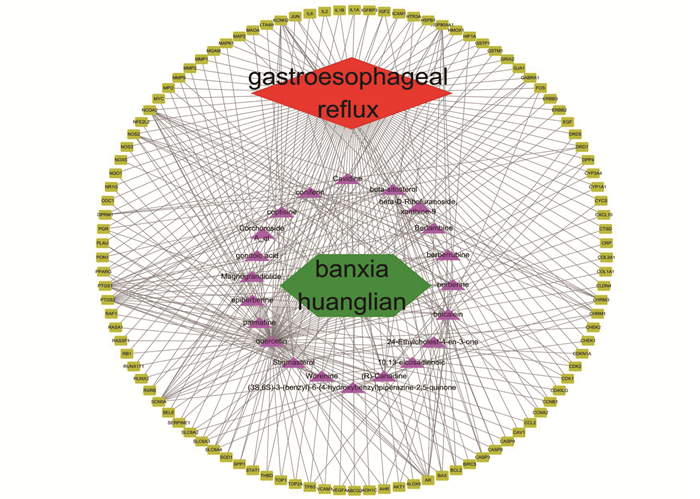
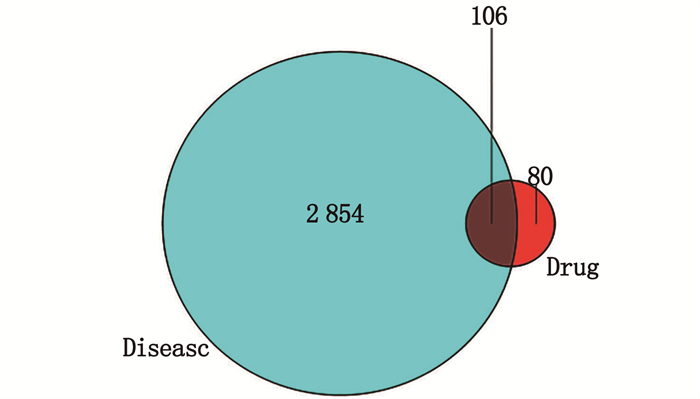
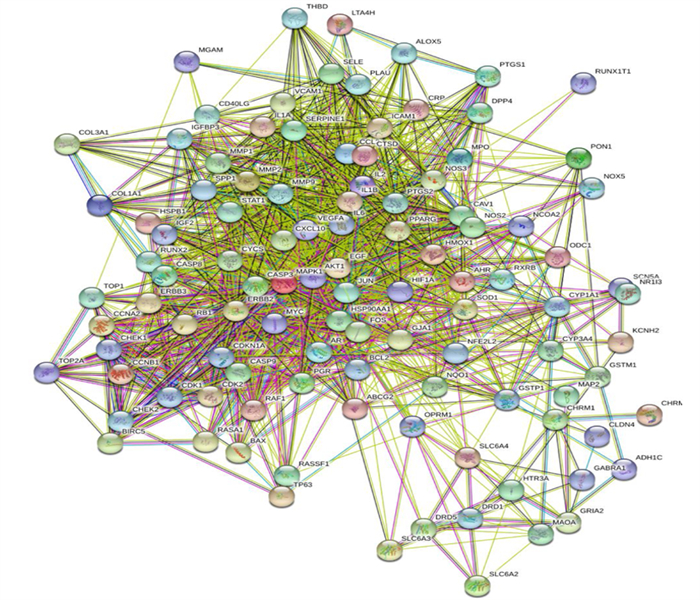
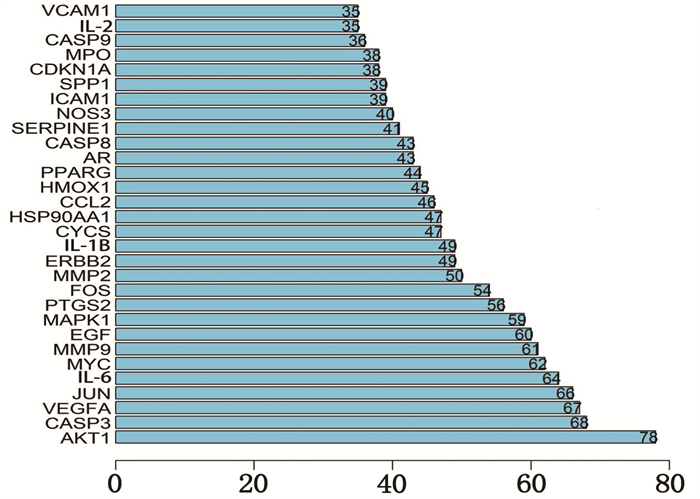
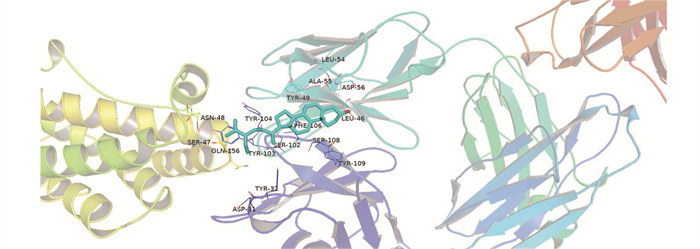
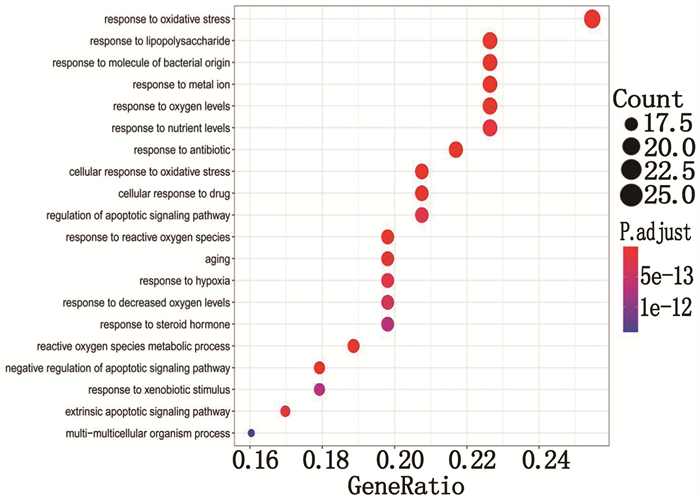


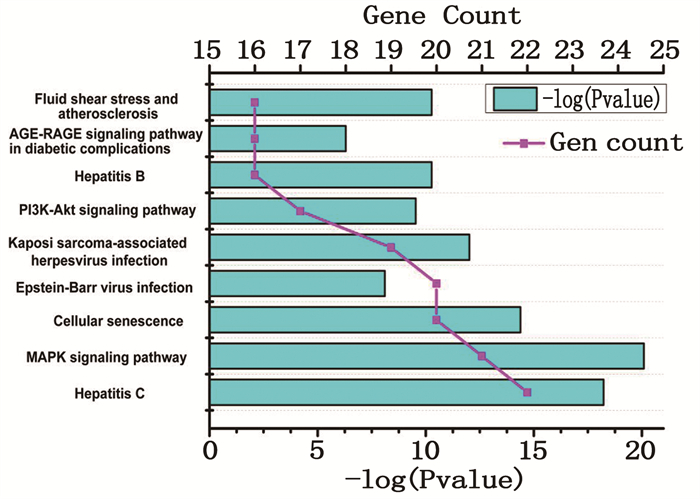
 苏公网安备 32100302010246号
苏公网安备 32100302010246号
